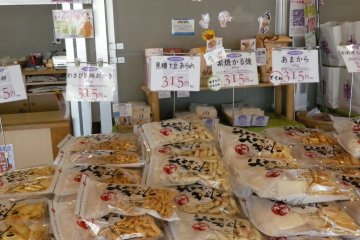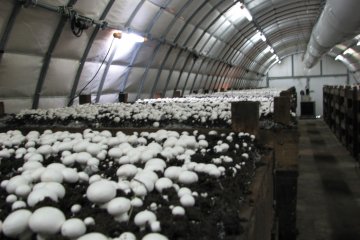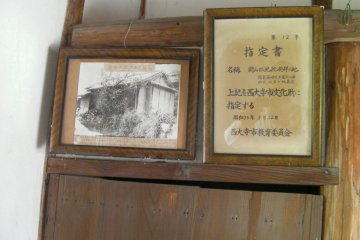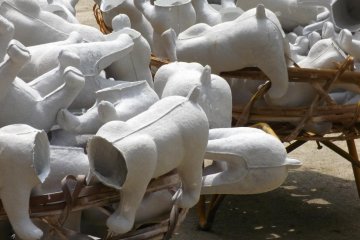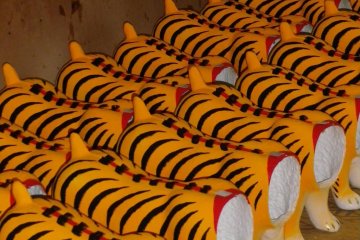Before you reach the entrance of the birthplace of Yumeji Takehisa in Setouchi City's Oku Town, you will notice a curious sight to your left. You might wonder why there paper mache tiger dolls are placed on the street as I did and wander in and take a look.
There you will come across the owner, Mr. Takehisa. Now, you may be asking yourself, "Is he related to the famous artist of the same name?" The answer is yes. It turns out that they share the same ancestors though they use different kanji for their family name. So art runs through the Takehisa lineage it would seem, as Mr. Takehisa's shop is well known for producing satsuki ningyo, hina ningyo and omiyage. Satsuki and hina ningyo are the dolls used for the children's and girl's festivals respectively, while the omiyage or souvenirs include dolls representing the current animal of the Chinese zodiac.
Mr. Takehisa was gracious enough to let me into the production area of his shop where he informed me that they produce about 30-40 dolls per day and that the process takes a week. I saw dolls of various sizes and at different stages of production. The sight of rows upon rows of unpainted tigers in the workshop reminded me of photos I had seen of the terra cotta warriors in China. Like those warriors, these tigers seemed ready to be brought to life.
The work of the Takehisa Shoten has attracted enough attention to merit a Japanese 80 yen postage stamp featuring the shop's products. Mr. Takehisa proudly displays the photo of the presentation of the stamp on the counter. In all my years in Japan I can recall that many of the government offices and public schools I have been to have had these ornate paper mache dolls on display. I remember even seeing a giant daruma that was most likely produced by Mr. Takehisa. I have finally had the chance to visit the source of Okayama's paper mache art, discovering yet another example of the sometimes fewer than six degrees that separate its people and culture.




